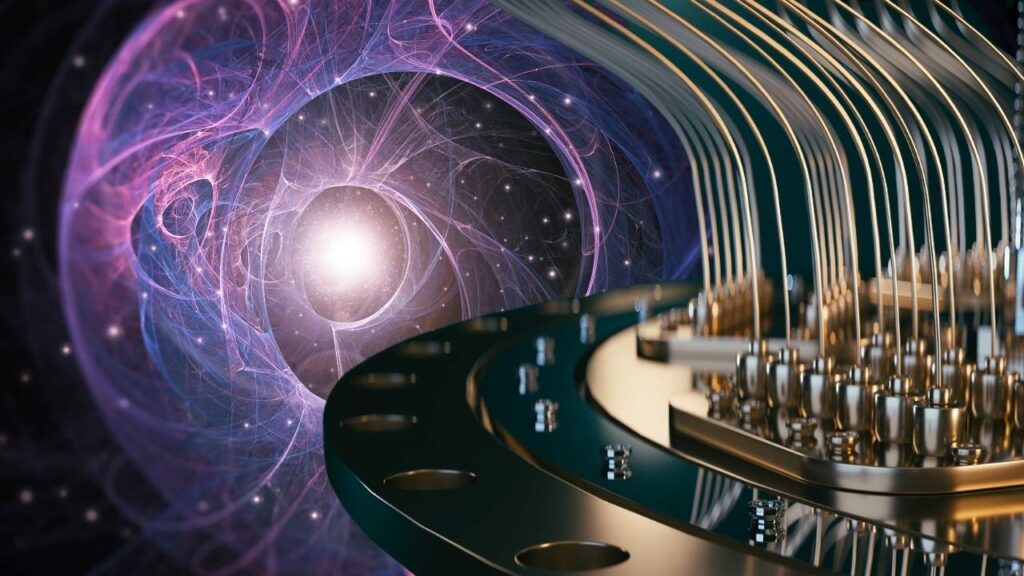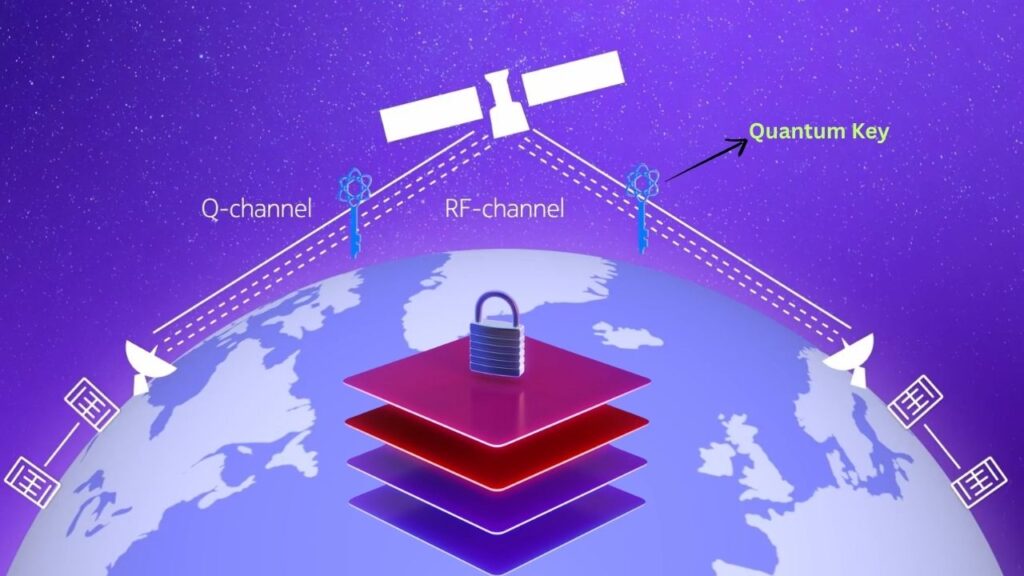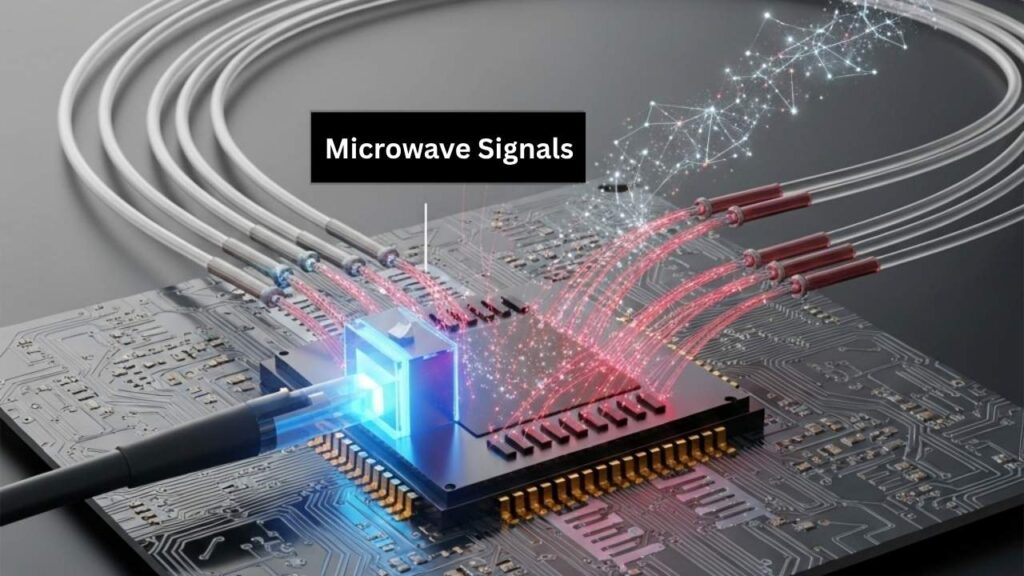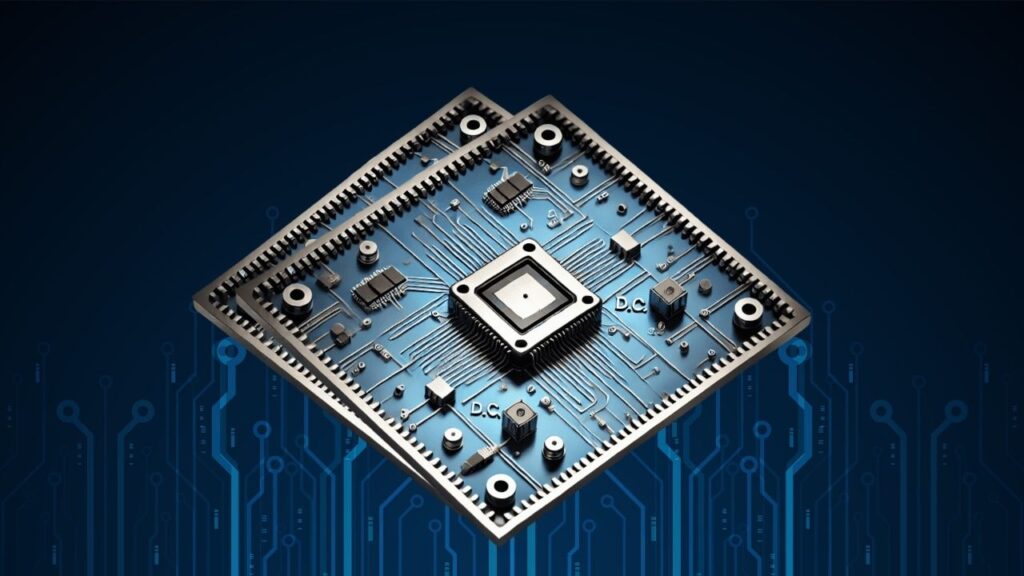Universal Quantum Translator: Imagine a world where computers can talk to each other instantly, no matter how far apart they are—even across oceans or continents. It may sound like science fiction, but thanks to a breakthrough called the universal quantum translator, this dream is one step closer to reality. Scientists have developed a tiny chip that can help quantum computers communicate over long distances, opening the door to a new era of ultra-secure and lightning-fast global networks.
Quantum computers are not like the computers you use at home or school. Instead of using bits (which are just 0s and 1s), they use something called qubits. Qubits are special because they can be 0, 1, or both at the same time—a concept known as superposition. This lets quantum computers solve problems much faster than regular computers. But there’s a catch: quantum computers need to send information to each other to work together, and that’s not easy over long distances.

That’s where the universal quantum translator comes in. This device is like a magic box that can turn the signals used by quantum computers into signals that can travel through fiber-optic cables—the same kinds of cables that bring the internet to your home. The translator is so efficient that it can convert up to 95% of a microwave signal into an optical photon and back again, all while using very little power and keeping the information safe from noise and errors. Most importantly, it preserves something called quantum entanglement, which is a fancy way of saying that particles remain connected no matter how far apart they are. This is essential for building a global quantum internet.
Universal Quantum Translator
| Feature/Statistic | Details |
|---|---|
| Signal Conversion Efficiency | Up to 95% of microwave signals converted to optical photons |
| Power Consumption | Operates at millionths of a watt |
| Quantum Entanglement Preservation | Yes, essential for secure quantum networks |
| Chip Material | Built on silicon, compatible with existing manufacturing |
| Potential Applications | Quantum internet, ultra-secure communication, global quantum networking |
| Official Reference | University of British Columbia, Quantum Computing & Communication Lab |
The universal quantum translator is a breakthrough that could change the way computers communicate forever. By connecting quantum computers across long distances, it opens the door to a new era of ultra-secure, lightning-fast global networks. Whether you’re a curious student, a tech enthusiast, or a professional looking to stay ahead, understanding quantum technology is more important than ever. With continued research and innovation, the future of quantum communication is bright—and it’s closer than you think.
What Is Quantum Computing and Why Does It Matter?
Quantum computing is a new kind of technology that uses the rules of quantum mechanics—the science of how tiny particles like atoms and electrons behave. Unlike regular computers, quantum computers can process lots of information at the same time because of superposition and entanglement. This means they can solve problems that would take regular computers thousands of years in just a few seconds.

Quantum technology is already being used to make super-secure communication channels, thanks to something called quantum key distribution (QKD). QKD uses the principles of quantum mechanics to create codes that are almost impossible to break, making it perfect for protecting sensitive information. If someone tries to spy on a quantum message, the message itself changes, alerting the sender and receiver that something is wrong.
How Does the Universal Quantum Translator Work?
The universal quantum translator is a small device built on a silicon chip, just like the ones in your phone or computer. It has a special job: to turn the microwaves used by quantum computers into light signals that can travel through fiber-optic cables. Here’s how it works in simple steps:

- Quantum Computer Sends a Signal: The quantum computer creates a signal using microwaves.
- Translator Converts the Signal: The translator takes the microwave signal and turns it into a light signal.
- Signal Travels Through Fiber Optics: The light signal zooms through fiber-optic cables, just like the internet.
- Translator Converts Back: At the other end, another translator turns the light signal back into a microwave signal for the receiving quantum computer.
- Quantum Entanglement Preserved: The whole process keeps the quantum information intact and secure.
This is a huge deal because it means quantum computers can work together over long distances, sharing information and solving problems as a team.
Why Is This Important for the Future?
The universal quantum translator is a game-changer for several reasons:
- Ultra-Secure Communication: Quantum networks are nearly impossible to hack, making them perfect for banks, governments, and anyone who needs to keep information safe.
- Global Quantum Internet: This technology could connect quantum computers all over the world, creating a new kind of internet that’s faster and more secure than anything we have today.
- Faster Problem Solving: Quantum computers working together can solve complex problems much faster than regular computers, which could help with things like climate modeling, drug discovery, and artificial intelligence.
Quantum Computing and Language Translation: A Quick Look

While the universal quantum translator is about connecting quantum computers, quantum technology is also changing how we translate languages. Quantum computers can process multiple languages and meanings at the same time, making translation faster and more accurate. Imagine a world where you can talk to anyone, no matter what language they speak, and the translation is instant and perfect. That’s the kind of future quantum technology could bring.
Step-by-Step Guide: How to Understand and Use Quantum Translators
Here’s a simple guide to help you understand and imagine how quantum translators work:
- Learn the Basics of Quantum Mechanics: Understand that quantum particles can be in multiple states at once (superposition) and can be connected over long distances (entanglement).
- See Quantum Computers as Super Solvers: Quantum computers use qubits to solve problems much faster than regular computers.
- Understand Signal Conversion: The translator changes microwave signals to light signals and back, so quantum computers can talk over long distances.
- Imagine a Global Network: Picture quantum computers all over the world, connected by fiber-optic cables and translators, sharing information instantly and securely.
- Think About Applications: Quantum networks could be used for secure banking, confidential government communication, and even instant language translation.
Practical Advice for Professionals and Enthusiasts
If you’re interested in quantum technology or want to get involved, here are some practical tips:
- Stay Updated: Follow news from leading universities and research labs, like the University of British Columbia, MIT, and Google Quantum AI.
- Learn the Basics: Take online courses on quantum computing and quantum mechanics to understand the fundamentals.
- Explore Open-Source Tools: Try out open-source quantum software platforms like lambeq and TKET, which are used for quantum language processing and other applications.
- Network with Experts: Join online communities and attend conferences to meet people working in quantum technology.
Researchers Identify a Previously Unknown Type of Molecular Movement
Simple Technique Improves CO₂ Conversion Efficiency in New Study
Scientists Uncover Rare Brain Activity That Could Unlock New Frontiers in Human Consciousness
FAQs About Universal Quantum Translator
Q: What is a universal quantum translator?
A: It’s a device that lets quantum computers communicate over long distances by converting their signals into light that can travel through fiber-optic cables.
Q: Why is quantum communication more secure?
A: Quantum communication uses principles like entanglement and superposition, which make it very hard for hackers to intercept or spy on messages.
Q: Can quantum computers translate languages?
A: Quantum computers can process language data much faster and more accurately than regular computers, making them great for advanced language translation.
Q: How soon will we see a global quantum internet?
A: Scientists are making rapid progress, but it may still take a few years before a global quantum internet is fully operational.
Q: Is quantum technology hard to understand?
A: The basics can be explained simply, but the advanced science is complex. Start with the fundamentals and build your knowledge over time.






